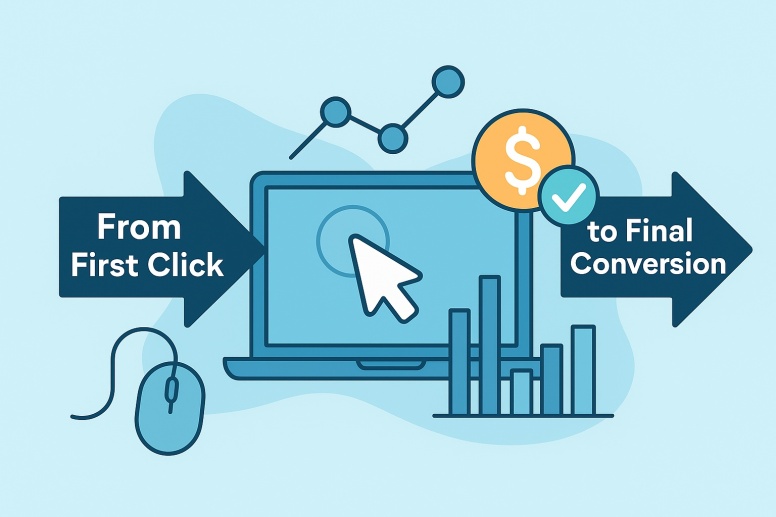
How to Track Affiliate Campaigns Like a Pro
From First Click to Final Conversion.
At the heart of every successful affiliate marketing campaign is tracking. If you’re not tracking anything, you’re flying blind and cannot see which efforts produce clicks, conversions, or sales. You can create meaningful insights from unrefined data using the right tactics. Follow these steps to set up tracking and analyze performance like a pro.
Why Tracking Affiliate Campaigns Matters.
If you’re conducting affiliate campaigns without tracking, you’re missing out on important information. Tracking helps you see what’s working, what isn’t and where you should put more effort. If you don’t have a proper budget in mind, you might just keep pouring money into strategies that never convert.
The Basics of Affiliate Tracking.
By assigning clicks, visitors and sales unique identifiers, affiliate tracking works. This way, you can trace a conversion back to its source. Most affiliate networks provide tracking tools, but third-party solutions like track affiliate campaigns offer deeper insights. The important thing is to track each touchpoint from the first click till the purchase.
Common Tracking Mistakes to Avoid.
Many newbies only pay attention to simple reports from their affiliate network. Information like which ad creatives worked best, which traffic sources brought in the highest quality leads, is often missing. Failing to test tracking setups before launching campaigns is another error. A small error in your tracking links can corrupt your data and cause you to waste money on ads.
Setting Up Your Affiliate Tracking System.
A good tracking system begins with the right tools. Some networks have tracking of some sort built in, but advanced marketers often run 3rd party software.
Choosing the Right Tracking Platform.
The best tracking platform depends on your needs. If you are just starting out, the tracker built into your affiliate network may suffice. If you run multiple campaigns on different networks, a dedicated tracker helps keep all your data in one place. When searching for potential ad network partners, seek real-time reporting, conversion attribution, cross-device tracking and more
How to Implement Tracking Links.
Tracking links are the building blocks of affiliate campaign tracking. The links have parameters that specify the traffic source, campaign, and element (ad). Although many affiliate networks create these links for you, you can also create them manually using UTM parameters. Before going live, always test your links to ensure they are working.
Measuring Campaign Performance.
After tracking is set up, the next step is performance analysis. The aim is to find which campaign generates the most conversions and revenue.
Key Metrics to Monitor.
Not all metrics are equally important. Pay attention to CTR, conversion rate, and return on ad spend (ROAS). The CTR indicates how appealing your ads are, while the conversion rate shows how your ads convert clicks into sales. ROAS measures profitability—the higher, the better. If you ignore them, you could be wasting money on bad campaigns.
How to Interpret Data for Better Decisions.
Raw numbers alone don’t tell the full story. Notice the trends. For example, which traffic sources bring repeat buyers or which ad creatives increase conversions? Try this one:
If a campaign gets a lot of clicks (high CTR) but few conversions, the landing page might stink. Data-driven choices make successful affiliates from unprofitable ones.
Advanced Tracking Strategies.
Once you have learned the basics, move to advanced tracking techniques. These help you fine-tune campaigns for maximum profit.
Using Multi-Touch Attribution.
Not all conversions happen on the first click. A user might see your ad multiple times before buying. Multi-touch attribution tracks every interaction to give you insight into what drove a purchase. Using this, you can allocate the budget more wisely rather than awarding just the last click.
Split Testing for Optimization.
Split testing is essential for improving the performance of your campaigns. Try out various ad designs, landing pages, or even propositions to see what fits best. Tracking tools can help you compare results side by side. If you are not doing split testing, you’re guessing; guesses don’t scale.
Troubleshooting Tracking Issues.
Even the best tracking setups can run into problems. If you know how to point out the issues and fix them, you can save time and data.
Why Conversions Might Not Be Tracked.
In case you are missing conversions, broken tracking links, cookie blockers, or landing page URL mismatches could be the cause. Sometimes, ad blockers prevent tracking pixels from firing. A frequent problem you might see is that they report delays. In some networks, it can take hours (or sometimes, days) before statistics in the app are updated.
How to Ensure Accurate Tracking.
Regular audits keep your tracking system reliable. Check links for correctness, test tracking pixels, and compare data. If numbers don’t match, dig deeper to find the discrepancy. Precise tracking implies that your data can be trustworthy when making big decisions.
Measuring affiliate programs is merely collecting data. It’s using this data to make better decisions. Setting up tracking links and analyzing the advanced metrics will help you optimize for better results. The more precise your tracking, the faster you’ll grow. Try out these strategies today, and you will see your campaign performance improve.














